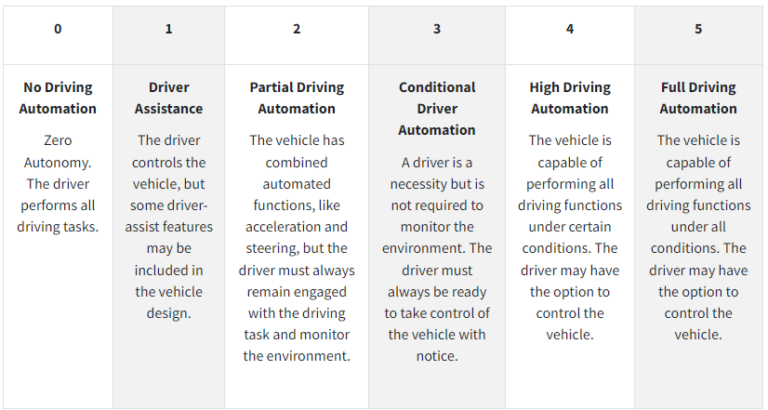For years, self-driving vehicles have been touted as a potentially revolutionary transportation technology. For most of the general public, however, the concept of self-driving vehicles has either seemed impossible or possible in the far-distant future. Public and private sector agencies have already been investing resources into the development of “connected & autonomous vehicles”(CAV), and momentum around the emerging technology is building rapidly. Companies such as Google and Tesla have successfully tested millions of miles with autonomous vehicles, with most new vehicles having some degree of automation. As research continues and public embrace grows, communities must be prepared to adapt to the changing transportation ecosystem. Federal and state agencies are already in the works of crafting legislation to brace for potential impacts CAVs may have on local communities Through the established Connected and Autonomous Vehicles Task Force, Centralina Regional Council is bringing together stakeholders from across the region in order to best prepare for this wave of change in transportation.
The Challenge
Connected and autonomous vehicles refer to two separate technologies: Connected Vehicles (CVs) and Autonomous Vehicles (AVs). Connected vehicles are “connected” to their environment and receive and send alerts. They can be connected to other vehicles, infrastructure, pedestrians or other devices. Autonomous vehicles are driverless or self-driving vehicles that are computer-driven and do not require a human to operate the vehicle. There are a range of automation levels, from Level 0 (No Driving Automation) to Level 5 (Full Driving Automation); most new cars have some level of automation (usually Level 1 or Level 2).
CAVs have a range of possible benefits for safety, mobility, sustainability and cost-efficiency. However, it is unknown when, or if, vehicles in the U.S. will be fully transitioned to CAVs. Experts predict that there will be a mixed-fleet of CAVs and non-CAVs for many years. During this transition, communities might face negative impacts. For example, CAVs may require updated infrastructure, which would increase the need for transportation investments. While much is unknown of what the future of CAVs holds, successful adoption will require coordination with local communities. It is crucial that elected officials and planners are updated on CAVs and how they may impact their existing plans and policies.
The Solution
A primary goal of Centralina Regional Council is to “lead regional engagement to prepare, plan and act on issues that respond to today’s needs and tomorrow’s opportunities”. In that spirit, Centralina developed a Connected & Autonomous Vehicles Task Force to provide a forum for member communities to discuss the current and future impacts of connected and autonomous vehicles within the Centralina region.
The group was developed in 2017 after Centralina facilitated a “Connected & Autonomous Vehicles” workshop for stakeholders in the region. In 2018, Centralina developed the CA Roadmap document to help guide the direction and actions of the group, which was recently updated in summer 2023. Other than a brief halt during the COVID-19 pandemic, the group has been meeting consistently since its inception. Its membership represents a diverse array of stakeholders from across the region, including local governments officials, Metropolitan Planning Organizations (MPOs), the N.C Department of Transportation (NCDOT), Federal transportation planning agencies, private industry staff and university researchers.
The Result
Through the CAV Task Force, members have benefitted from providing and receiving updates on the status of the CAV industry at the local, regional, state and national level. In addition, the group has been complementary to the implementation of regional transportation plans such as CONNECT Beyond and Beyond 77, both of which call for increased coordination around emerging technologies like connected and autonomous vehicles.
A recent example of collaboration was the CAV Task Force’s participation in the CASSI program. The CASSI program was developed through a partnership with the N.C. Department of Transportation and the University of North Carolina at Charlotte. CASSI is a novel-designed, low-speed autonomous shuttle that operates in a mixed-traffic environment with bicyclists, pedestrians and motor vehicles, without the need of a human driver. Centralina coordinated with NCDOT to host a first-hand tour of CASSI for the CAV Task Force, where attendees were able to hear from NCDOT and UNC Charlotte staff about the impacts and lessons learned from the CASSI program and take a ride on the shuttle through a campus route. This experience was mutually beneficial, as participants were able to provide feedback on their shuttle experience and also learn about how similar technologies may impact their communities.
Conclusion
While the exact future of connected and autonomous vehicles is uncertain, the impacts, both positive and negative, are already becoming a reality for communities. Leaders and planners must adapt their plans and policies to prepare for these future technologies, which requires coordination across a broad spectrum of stakeholders. Through the Connected and Autonomous Vehicles Task Force, Centralina is providing a space for stakeholders to share updates, learn new information, and develop best practices for CAV-readiness, best preparing our region for a connected and autonomous future.
If you are interested in learning more about the CAV Task Force, contact Luke Lowry, Regional Planner II, at llowry@centralina.org for more information.





